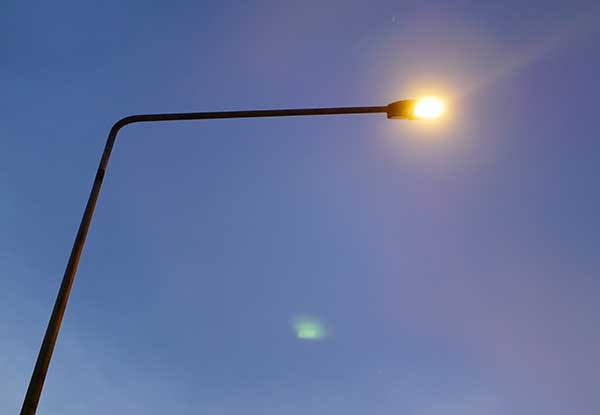Fairfax County helped to lead the effort to create a new regional agreement with Dominion Energy that lights the way for converting existing streetlights to more energy- efficient LEDs.
The agreement makes transitioning to LEDs less expensive for local governments and offers more options in the future.
Fairfax County Board of Supervisors Chairman Sharon Bulova’s leadership moved forward this initiative undertaken by the Northern Virginia Regional Commission and Northern Virginia’s local governments.
“LED streetlights are longer lasting and more efficient than traditional streetlights,” said Bulova. “Many thanks to all those involved in this effort, including Dominion and the Northern Virginia Regional Commission.”
Dominion installs, owns, operates and maintains most of the nearly 58,000 streetlights in Fairfax County. The new agreement presents an opportunity to begin converting these lights to LEDs, according to county officials. The county would be responsible for paying to replace existing high-pressure sodium, metal halide and mercury vapor streetlights with LEDs.
As the negotiations with Dominion were ongoing, the county hired a consultant to consider the best ways to utilize streetlight infrastructure in the future. This study is expected to be completed in the fall, and county staff will develop an associated budget proposal.
New Agreement’s Benefits
The new agreement with Dominion offers many benefits, including:
- Lower costs for converting existing streetlights to LEDs. Dominion will charge $130 to convert what is currently considered a standard, basic, streetlight fixture to either a basic or premium LED light. This upfront cost is recouped in the long run because LEDs are more energy efficient and last longer.
- No-cost, LED conversions for existing streetlight fixtures that fail. Dominion will not charge the county for these conversions.
- Lower monthly costs to operate the LEDs. Previously, Dominion charged about $12 in electricity distribution and supply costs for a basic LED streetlight based on the utility’s rates last year. This cost will be about $7 for a basic LED light under the new agreement.
- More choice in the type and style of LED streetlights. Before, Dominion only offered two LED fixtures. Under the new agreement, up to 18 different fixture styles may be available, although the county would not use all available types.
- Warmer color temperatures. Until now, Dominion only offered 4,000-Kelvin LEDs. Under the agreement, 3,000-Kelvin lights, which produce softer light, will be available.
- Smart technology ready with a “seven-pin capability.” This allows future smart technologies to be added to the lights, such as dimmers, remote monitoring, outage reporting and other sensor arrays. Further discussions with Dominion will be required to begin implementation of these “smart city” applications.
LED streetlights use 40 to 60 percent less electricity when compared to conventional streetlights, and they last up to three to four times longer.
Cities across the nation have begun making the switch to LED streetlights, including New York, Chicago and Los Angeles. The move saves governments money in the long run with lower utility bills, and it also helps the environment through reduction of greenhouse gas emissions.
LED Conversions in Fairfax County Buildings
The county’s move toward LEDs outside on the street complements its efforts off the street, inside its own buildings. More than 2,277 LED bulbs have been installed in county facilities since last July, reducing utility bills and greenhouse gas emissions. This has resulted in:
- $544,546 in lifetime savings on electricity costs.
- More than 6.8 million kilowatt hours saved in lifetime energy use.
This is equivalent to avoiding the release of 50,607 metric tons in planet-warming, greenhouse gases.
Fairfax County also recently adopted a new, broader operational energy strategy that aims to significantly lower utility bills and carbon emissions. This strategy will cut energy consumption in county buildings and facilities by 20 percent per square foot over 10 years.
# # #

